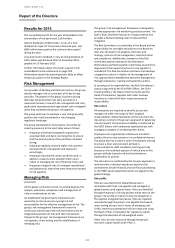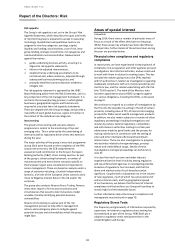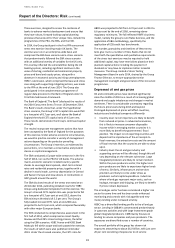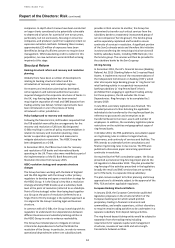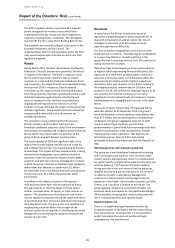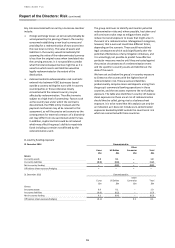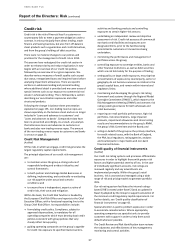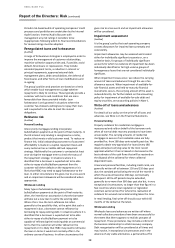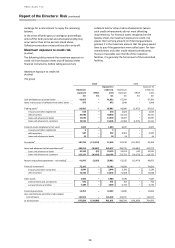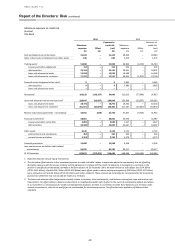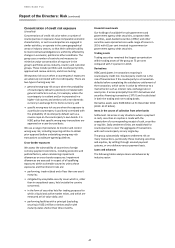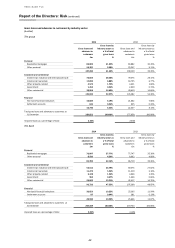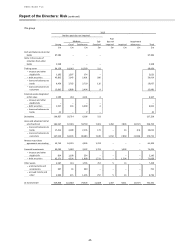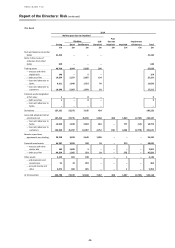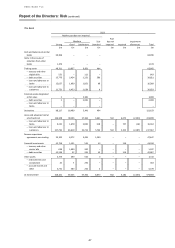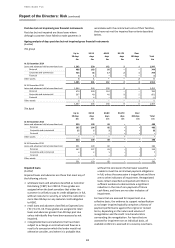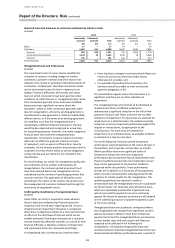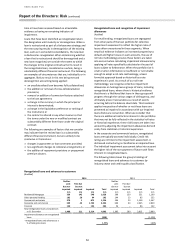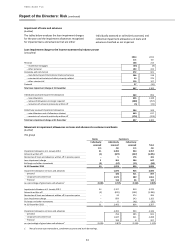HSBC 2014 Annual Report Download - page 43
Download and view the complete annual report
Please find page 43 of the 2014 HSBC annual report below. You can navigate through the pages in the report by either clicking on the pages listed below, or by using the keyword search tool below to find specific information within the annual report.
HSBC BANK PLC
Report of the Directors: Risk (continued)
41
Concentration of credit risk exposure
(Unaudited)
Concentrations of credit risk arise when a number of
counterparties or exposures have comparable economic
characteristics, or such counterparties are engaged in
similar activities, or operate in the same geographical
areas or industry sectors, so that their collective ability
to meet contractual obligations is uniformly affected by
changes in economic, political or other conditions. The
group uses a number of controls and measures to
minimise undue concentration of exposure in the
group’s portfolios across industry, country and customer
groups. These include portfolio and counterparty limits,
approval and review controls, and stress testing.
Wrong-way risk occurs when a counterparty’s exposures
are adversely correlated with its credit quality. There are
two types of wrong-way risk:
• general wrong-way risk occurs when the probability
of counterparty default is positively correlated with
general risk factors such as, for example, where the
counterparty is resident and/or incorporated in a
higher-risk country and seeks to sell a non-domestic
currency in exchange for its home currency; and
• specific wrong-way risk occurs when the exposure to
a particular counterparty is positively correlated with
the probability of counterparty default such as a
reverse repo on the counterparty’s own bonds. It is
HSBC policy that specific wrong-way transactions are
approved on a case-by-case basis.
We use a range of procedures to monitor and control
wrong-way risk, including requiring entities to obtain
prior approval before undertaking wrong-way risk
transactions outside pre-agreed guidelines.
Cross-border exposures
We assess the vulnerability of countries to foreign
currency payment restrictions, including economic and
political factors, when considering impairment
allowances on cross-border exposures. Impairment
allowances are assessed in respect of all qualifying
exposures within vulnerable countries unless these
exposures and the inherent risks are:
• performing, trade-related and of less than one year’s
maturity;
• mitigated by acceptable security cover which is, other
than in exceptional cases, held outside the country
concerned;
• in the form of securities held for trading purposes for
which a liquid and active market exists, and which are
measured at fair value daily; and
• performing facilities with a principal (excluding
security) of US$1 million or below and/or with
maturity dates shorter than three months.
Financial Investments
Our holdings of available-for-sale government and
government agency debt securities, corporate debt
securities, asset-backed securities (‘ABSs’) and other
securities were spread across a wide range of issuers in
2014, with 61 per cent invested in government or
government agency debt securities.
Trading assets
Trading securities remained the largest concentration
within trading assets of the group at 73 per cent
compared with 71 percent in 2013.
Derivatives
HSBC participates in transactions exposing it
counterparty credit risk. Counterparty credit risk is the
risk of financial loss if the counterparty to a transaction
defaults before completing the satisfactory settlement of
the transaction, which varies in value by reference to a
market factor such as interest rate, exchange rate or
asset price. It arises principally from OTC derivatives and
securities financing transactions (‘SFTs’) and is calculated
in both the trading and non-trading books.
Derivative assets were £188 billion at 31 December 2014
(2013: £137 billion).
Items in the course of collection from other banks
Settlement risk arises in any situations where a payment
in cash, securities or equities is made with the
expectation of a corresponding receipt of cash, securities
or equities. Daily settlement limits are established for
counterparties to cover the aggregate of transactions
with each counterparty on any single day.
The group substantially mitigates settlement risk on
many transactions, particularly those involving securities
and equities, by settling through assured payment
systems, or on a delivery-versus-payment basis.
Loans and advances
The following tables analyse loans and advances by
industry sector.


